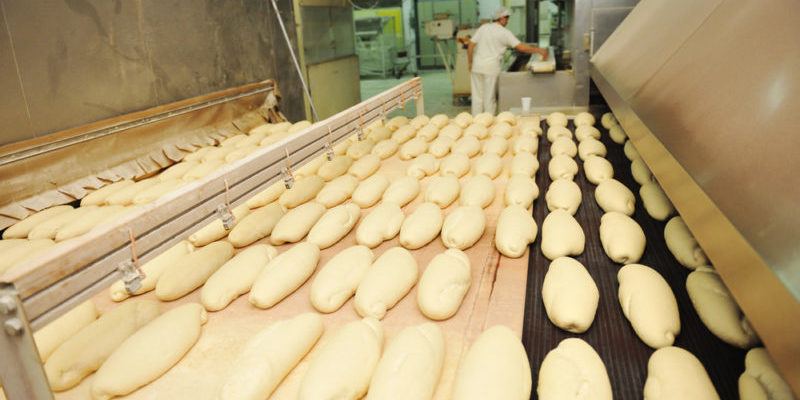Embracing Manufacturing Innovations in the Food Industry
The introduction to automation within the food industry started off gradual, such as controlling oven temperatures or picking out poor quality fruits. During the COVID era, your business might have adopted kiosks to eliminate direct contact between you and the consumer. Now, there are completely automated systems assisting with harvesting, processing, and packaging food throughout the world.
Automation and manufacturing innovations for the food industry happened in rapid succession over the past few years. You have to wonder if these innovations are worthy of adoption and what you should expect in the future.
The Pandemic Accelerated Automation Adoption
Prior to the coronavirus pandemic, the food industry was largely focused on manpower. Adopting automated systems was met with apprehension, despite the benefits. But the pandemic changed minds—rapidly.
The food industry, including restaurants and bakeries, faced dozens of complications, like a lack of employees, stringent sanitation demands, and wavering consumer trends. Understaffed and lacking resources, numerous bakeries, food production plants, farms, and eateries met each day with uncertainty.
How can a facility that bakes thousands of loaves of bread or packaged breakfast pastries survive when the majority of their staff was sent home for quarantine? How could they meet the growing demand? You have probably asked yourself these questions a dozen times already.
You might have noticed a ripple of change throughout the food industry, one that includes an accelerated adoption automated processes and the implementation of PLC systems.
Enhanced By Automation
Despite the challenging conditions presented by the pandemic, the food industry couldn’t stop. Since food is essential to human survival, it was time for farmers and food manufacturers to experiment. Automation addresses the labor shortage and liabilities. Automation accelerates the production line without diminishing quality.
Most of all, automation reduces errors while increasing reliability.
Let’s look at this from the perspective of industrial-level baking. Advanced sorting systems are accompanied with systems for washing, peeling, baking, and packaging. Industrial PLC systems, such as those produced by EZSoft, can also record recipes then follow the instructions perfectly each time. Sifters, mixers, blenders, and batch ovens can be controlled all with a single automated system.
Furthermore, automation can help food processing and packaging facilities improve storage solutions, distribution, and product shelf-life. Manufacturers and processors can use automation to track the status of products from the point of production to delivery. For organic items, such as breads, cakes, pastries, and cereals, this is a tremendous boon. As of 2020, food industry automation was estimated to grow at a rate of 7%, but with accelerated adoption, the growth rate is currently around 9%.
How to Adopt Innovations for Your Food Business
Whether your business focuses on mass production or is more artisanal, there are ways to innovate with automation. Using automation to produce a higher level of quality and consistency can benefit your business, as well as support those who are still working by hand. Therefore, if you are looking to adopt automation for your food business, the first step is to recognize which processes you want to enhance.
One of the first parts of the production line to be optimized with automation is dough dividing and sorting, but there are new innovations that can scale and form dough with higher amounts of water content, too. This used to be only possible by hand, but innovation can make the impossible possible. With automation software and machinery, you can produce artisanal breads and pastries that have handmade quality without requiring an employee to do the work.
Automated systems can measure ingredients, sort items, mix, blend, knead, churn, and deposit toppings and fillings with ease. As mentioned earlier, there are applications that upload recipes into a database. Whenever selected, the recipe will initiate the same processes and equipment each time.
If you are dealing with a shortage of labor or workers, there are even automation and manufacturing innovations in the food industry for automated rack unloading and reloading.
You can also introduce automation in an effort to reduce the risk of foreign contaminants from getting into batches, as well as increase employee safety. Since a majority of automated systems are monitored and controlled remotely, there is less of a risk of personnel getting injured or ill.
Automate Your Food Business Today
With automation and manufacturing innovations becoming more mainstream in the food industry, it is time to consider whether automation is right for you. Smart automation technology has assisted the food industry during a time of crisis, and now it has become ingrained in the entire supply chain. There is no question that automation can increase efficiency and output and create a better work environment, even during challenging times.
If you are looking to seize some automation innovations for your food business, now is the time. EZSoft has developed robust software to control machinery, store data, and keep your business running smoothly. Reduce operational cost and improve the quality of your products dramatically. Give us a call at (484) 568-5040 or fill out the contact form to learn more.







